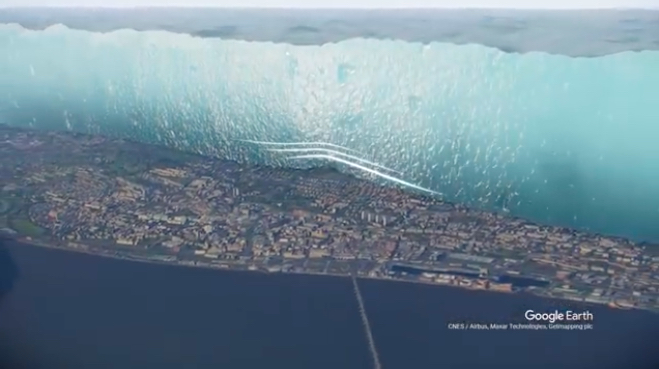Twenty thousand years ago, the world looked very different. Lots of areas that are now booming cities, peaceful countrysides, and dense woodlands would be completely unrecognizable. In some cases, they wouldn’t even exist at all!
For example, if we took a trip to Scotland at this time, we would be met by an endless expanse of ice and snow. A far cry from the green fields, rolling hills, and jagged mountains that make up the Scottish landscape of today.
That's because at the peak of the last Ice Age (about 20,000 years ago), Scotland sat beneath an enormous sheet of ice that extended far into the North Sea and beyond.
The coastal city of Dundee, elevated about 18m above sea level, would have been covered by a whole kilometre (3,280 feet) of solid ice! For reference, that’s around the height where small planes fly. That’s a lot of ice!
Bringing ancient ice to life
Still can’t quite visualize such a huge glacier? Well, look no further than this new video created by Kieran Duncan, a communications design lecturer at the University of Dundee in Scotland. Using 3D rendering technology, the video recreates what the 1 km glacier would have looked like atop the modern landscape. Get ready to see an entire modern-day city completely engulfed by ice!
Duncan created this video with the help of Max Van Wyk de Vries, a glaciologist (a scientist who studies glaciers) at the University of Minnesota. To find details about the glacier, the pair looked through scientific papers, local data, and even satellite images of Greenland to learn more about the stages of the glacier.
About 15,000 years ago, near the end of the last ice age, the Earth warmed up again and the glaciers retreated, or moved back over the land. As they did, they carved out amazing geologic features. The beautiful meadows, valleys, and mountains we see today in places like Scotland are all thanks to the immense power of this ancient ice!
 "The town is under a kilometre of ice? No biggie. right?" (Screenshot YouTube/Kieran J. Duncan/Max Van Wyk de Vries)
"The town is under a kilometre of ice? No biggie. right?" (Screenshot YouTube/Kieran J. Duncan/Max Van Wyk de Vries)









